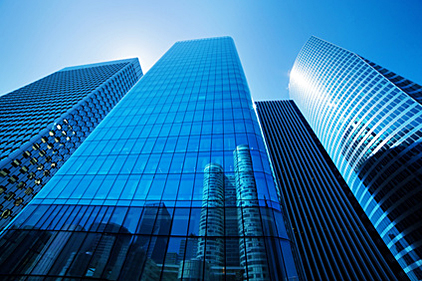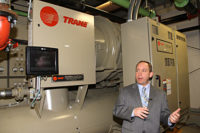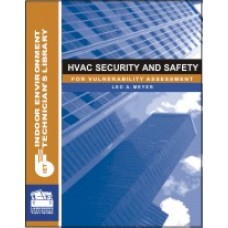 SEATTLE — Portland/Seattle green builder Hammer & Hand unveiled its 10 predictions for the United States high performance building industry. The predictions are the joint work of Hammer & Hand’s Sam Hagerman, immediate past president and current board member of the national Passive House Alliance US (PHAUS), Dan Whitmore, board member of PHAUS and Passive House Northwest and co-leader of Passive House Institute US’ national builders training program, and Skylar Swinford, high performance building consultant and speaker.
SEATTLE — Portland/Seattle green builder Hammer & Hand unveiled its 10 predictions for the United States high performance building industry. The predictions are the joint work of Hammer & Hand’s Sam Hagerman, immediate past president and current board member of the national Passive House Alliance US (PHAUS), Dan Whitmore, board member of PHAUS and Passive House Northwest and co-leader of Passive House Institute US’ national builders training program, and Skylar Swinford, high performance building consultant and speaker.
“We’re fortunate to have our feet in two spheres of the high performance building industry, that of policy and of practice,” said Hagerman. “And we see exciting developments coming in 2014.”
1. Focus will move beyond net zero energy to net positive energy buildings.
Three trends will begin moving the high performance building industry beyond net zero energy (NZE) buildings toward net positive energy (NPE) buildings:
a. Falling prices for solar photovoltaic panels to make energy production more feasible;
b. Increasing viability and availability of electric vehicles to harness surplus energy production and compete with buildings for electricity; and
c. The emergence of market mechanisms that reward both onsite energy conservation and production (see next point).
2. Market mechanisms that reward energy conservation and renewable energy production will flourish.
Market-based tools like feed-in tariffs (to allow building owners/operators to sell excess energy back to the grid), carbon offsets (to reward building owners/operators for reductions in carbon footprint), and metered energy efficiency transactions (to allow investors in building energy efficiency to sell “negawatts” back to the utility, being piloted by the Bullitt Center and Seattle City Light) will continue to gain ground in 2014.
3. Building energy codes will move away from prescriptive rules toward performance-based measures.
The city of Seattle leads the charge toward performance-based codes at the municipal scale, and the states of California and Washington have taken important first steps at the state level. The U.S. Department of Energy continues to push the envelope through its work on the International Energy Conservation Code. Expect the trend toward performance measures to continue in 2014 as the limitations of prescriptive code become more and more obvious to policy makers.
4. CO2 heat pumps will help transform heating and cooling performance.
New technology will continue to drive the development of the U.S. high performance building industry, with CO2 heat pumps making an entrance into the North American marketplace. These heating and cooling units bring these benefits:
a. More earth friendly due to lower global warming potential (GWP).
b. Move more energy more efficiently.
c. Work in much colder climates without the steep performance curve drop-offs seen with other heat pumps.
5. U.S.-made high performance windows will continue to make high performance building easier here.
As more U.S. window manufacturers begin producing high performance windows domestically in 2014, the availability and affordability of super-efficient fenestration will improve the economics of high performance building projects. The quality of these domestically produced windows will also continue to improve.
6. Builders and designers of high performance homes will design ventilation systems with a focus on quality of ventilation rather than just quantity.
Gone are the days of installing a couple of bath fans on timers to provide ventilation for a building’s occupants. Thanks to the building science debate over minimum requirements vs. best practices, Dr. Joe Lstiburek of Building Science Corp. (BSC) has spearheaded the charge for ventilation strategies and systems that understand the importance of ventilation quality (i.e., controlling the source of make-up air and mixing and distributing fresh air effectively).
7. The U.S.-led move to make the Passive House more climate-specific will improve performance at both the micro and macro levels.
In the past year the Passive House Institute US began spearheading the effort to make the Passive House standard more sensitive to the diverse climates found across the U.S., including partnerships with the Building Science Corp. and the Department of Energy. This effort will bear fruit in 2014, helping to guide successful high performance building in the American South and across the northern portion of the continent.
8. Passive House competition will result in better software tools for high performance building practitioners.
While much has been made of the Passive House split between “the Americans” (Passive House Institute US) and “the Germans” (Passivhaus Institut), competition between the two organizations has led to important innovations that will benefit high performance building practitioners in 2014.
9. Europe’s push to eliminate thermal bridges in buildings will make high performance building more mainstream in the U.S., too.
Europe is pushing hard to eliminate thermal bridges (building elements that transfer heat or cool energy through the building envelope), resulting in a wave of new user-friendly software tools for calculating thermal bridging. This development has brought what was once a highly technical, niche element of high performance building into the mainstream in Europe. These same tools apply equally well in the U.S., and promise to make the battle against thermal bridges easier to win for U.S. designers in 2014.
10. China’s interest in high performance building will propel the U.S. market.
While still emerging, China’s move toward high performance, energy conserving structures and building envelopes will have far-reaching impacts. From demand for U.S.-manufactured building components to supply of Chinese-made ones, the U.S. high performance building industry stands to gain when the world’s second largest economy puts its weight behind building energy conservation.
For more information, visit http://hammerandhand.com.
Publication date: 1/20/2014






